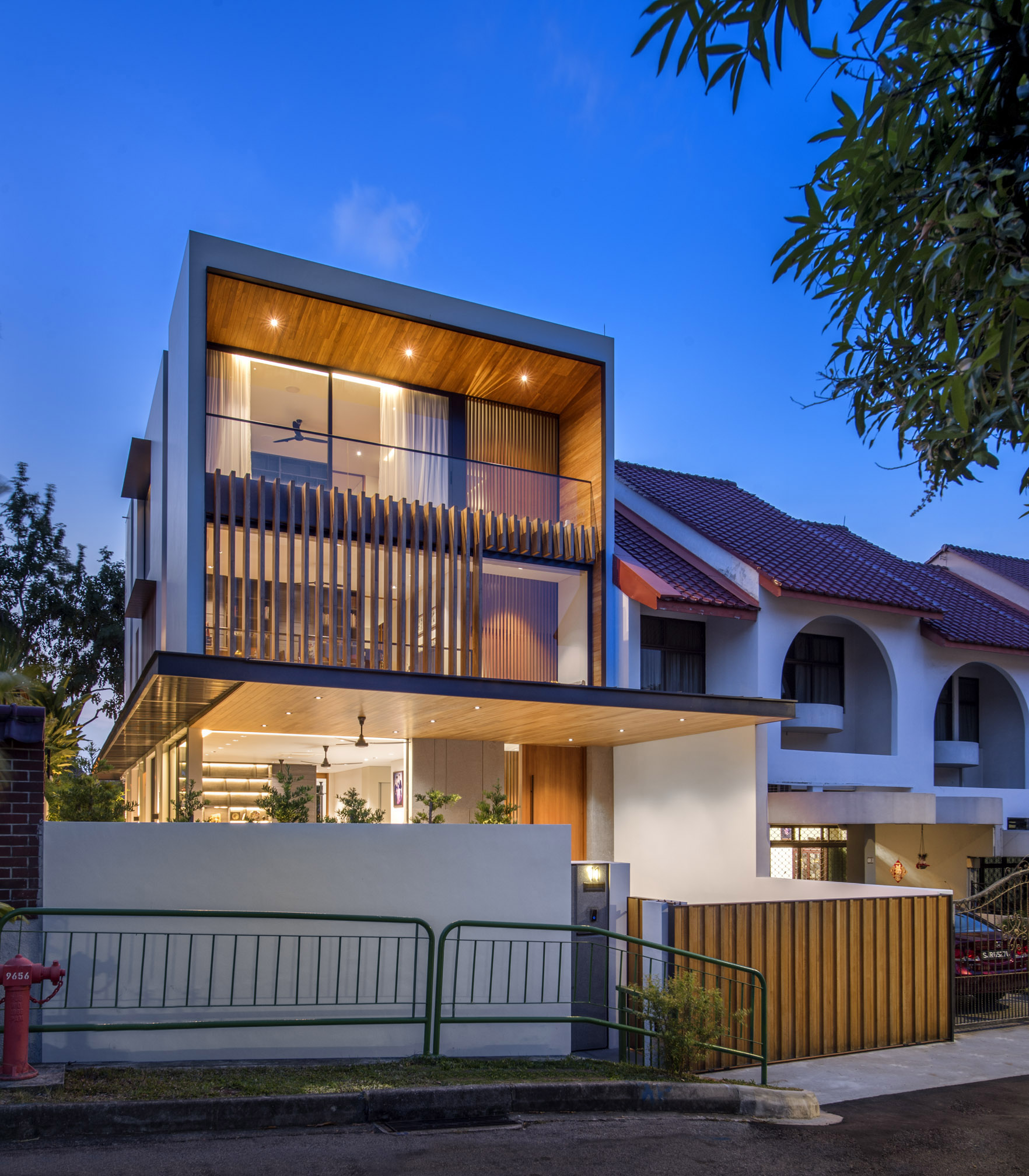
.
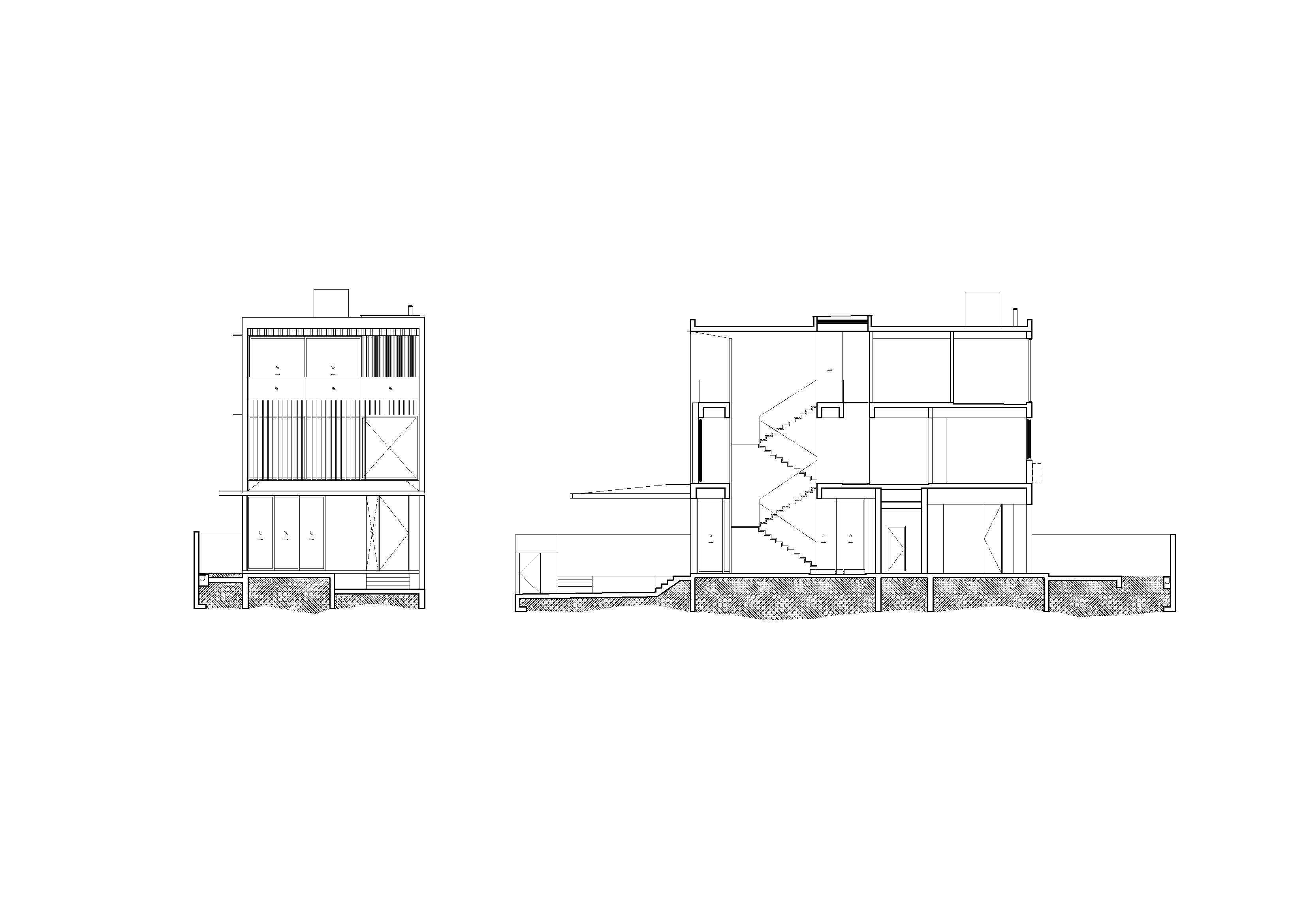
.
Situated in an estate of cookie-cutter houses built in the late 80s, Lentor House sets out to resolve the looming spatial constraint issues for a growing family, as well as injecting a distinctive architectural form in the monotonous neighbourhood in north-central Singapore.
Completed in 2018, the rebuild of this 3-storey corner terrace home was the solution to the existing house which was too small for its inhabitants. The design introduced high ceilings, ample light and natural ventilation into all the stories, as well as meeting the growing spatial needs of the family which had lived there over the past generation. The existing house suffered from cramped and dark interior spaces, insufficient lighting and was unsuitable for the needs of the client both spatially and stylistically.
To increase the spaciousness of the first storey living area, a large patio directly connected to the front of the living space was created which flows in a seamless transition between the two spaces. To eliminate dark spaces within the typical terrace house typology, a large skylight was introduced over the steel cantilevered staircase core. This invites natural light to filter into the various living spaces and create an inviting vertical circulatory core for the users.
The classic split level floor plans made way for the new single-leveled open floor plan with immediate connections to the external patio and landscaped areas. The conscious arrangement allows for activities to extend beyond the internal areas.
On the facade, solid burmese teak timber strips act as a privacy screen for the family room on the second floor, and form the feature for the front elevation. Encapsulated within the 3-storey high white framed volume are layered spaces that reveal the homeowners’ individual spatial requirements for the house. On the top storey, an entertainment room opens out via large over-sized sliding glass panels to a covered balcony, with expansive views of the estate beyond. The teak timber cladded facade walls and ceilings, along with the timber screens act as a binding factor to interject warmth to the otherwise monolithic facade, counteracting the large boxy volume.
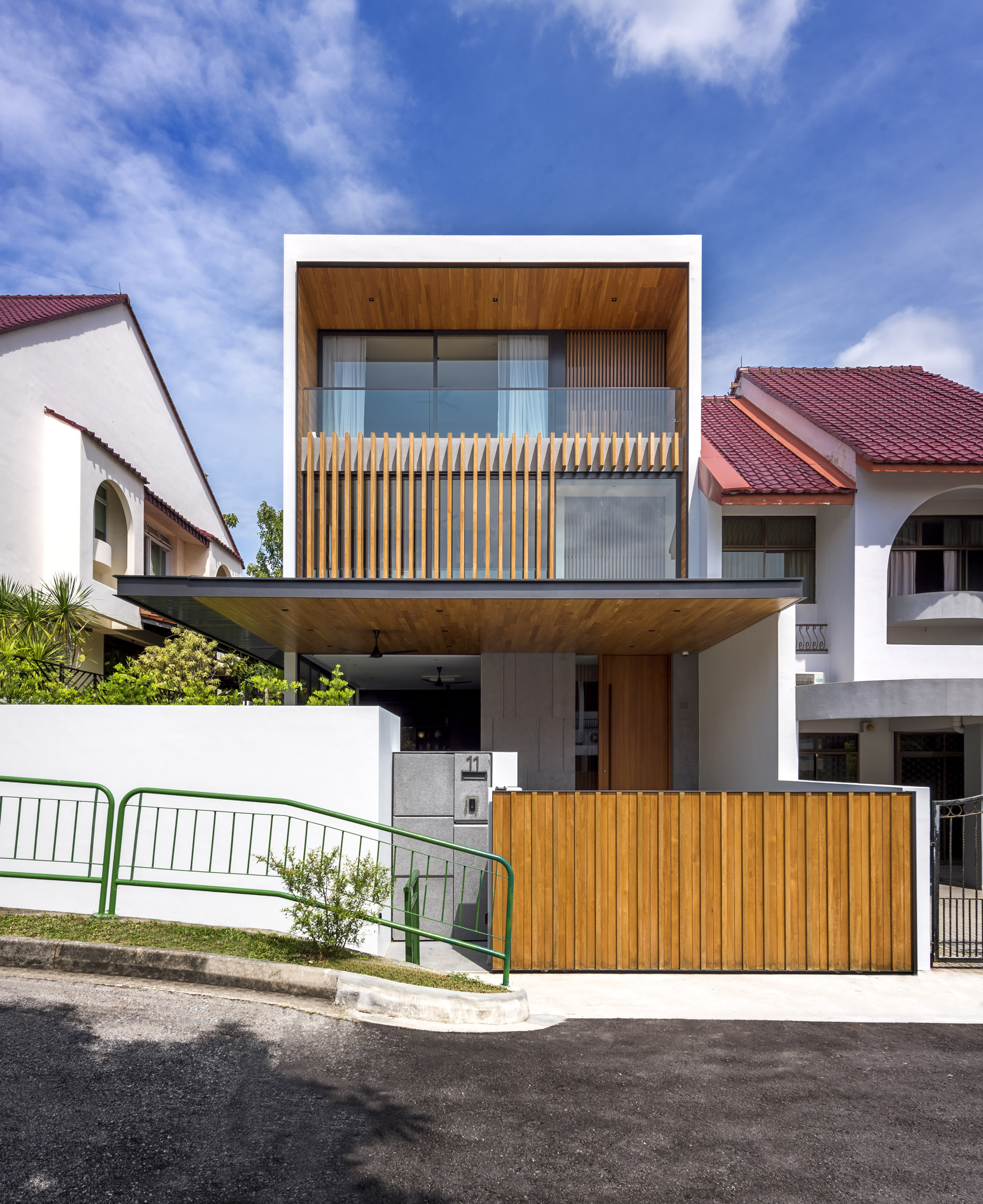
.
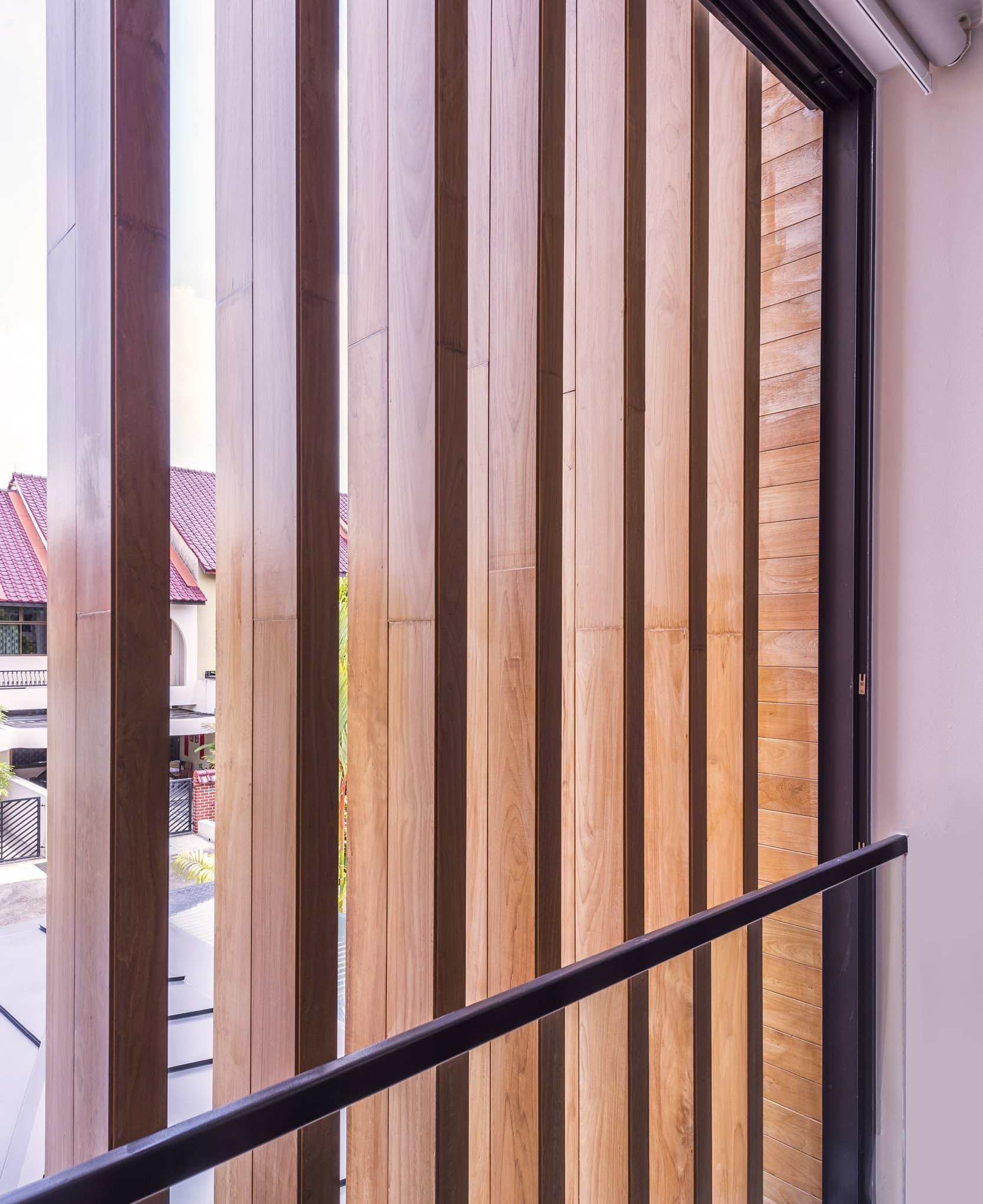
.
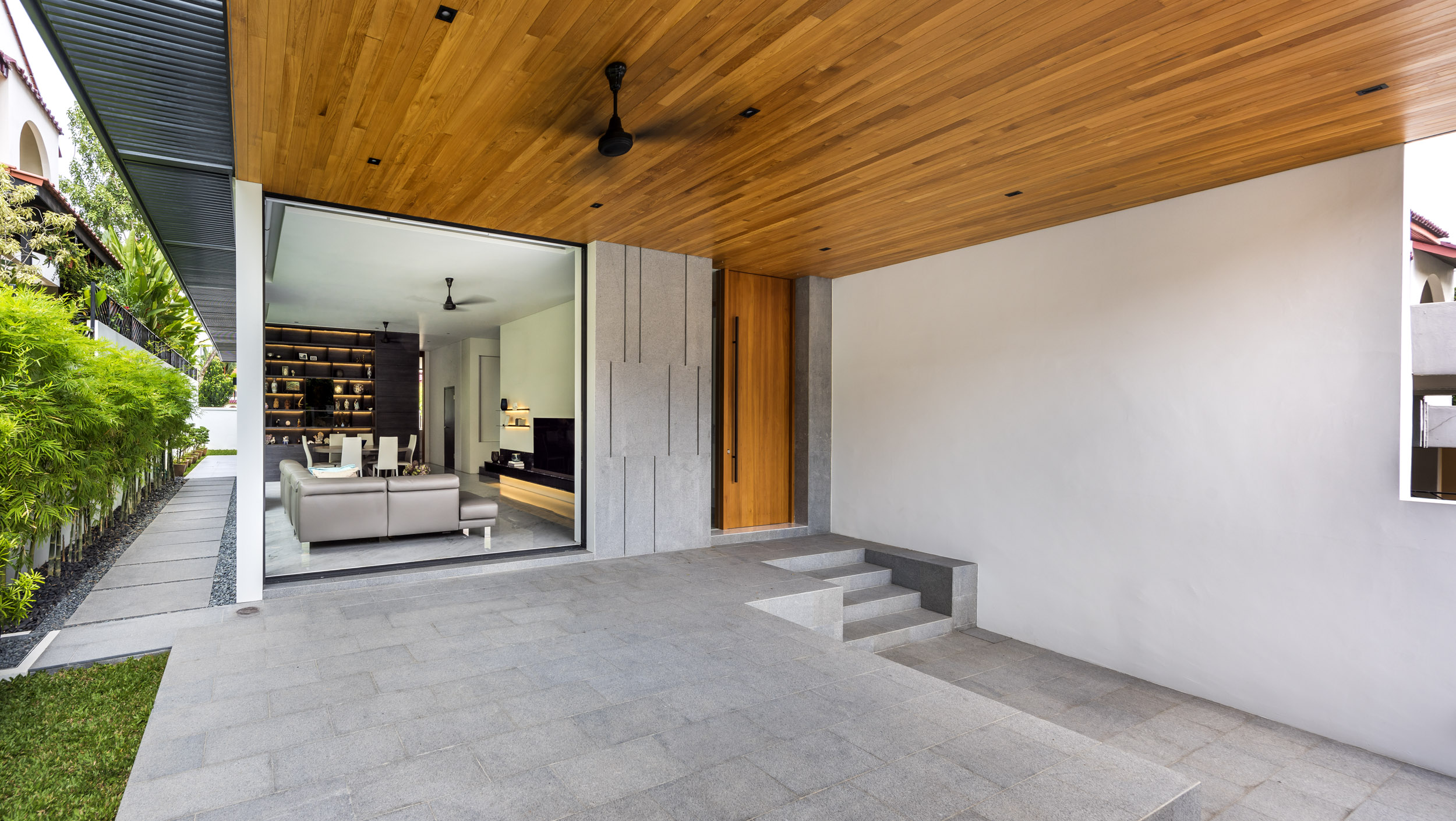
.
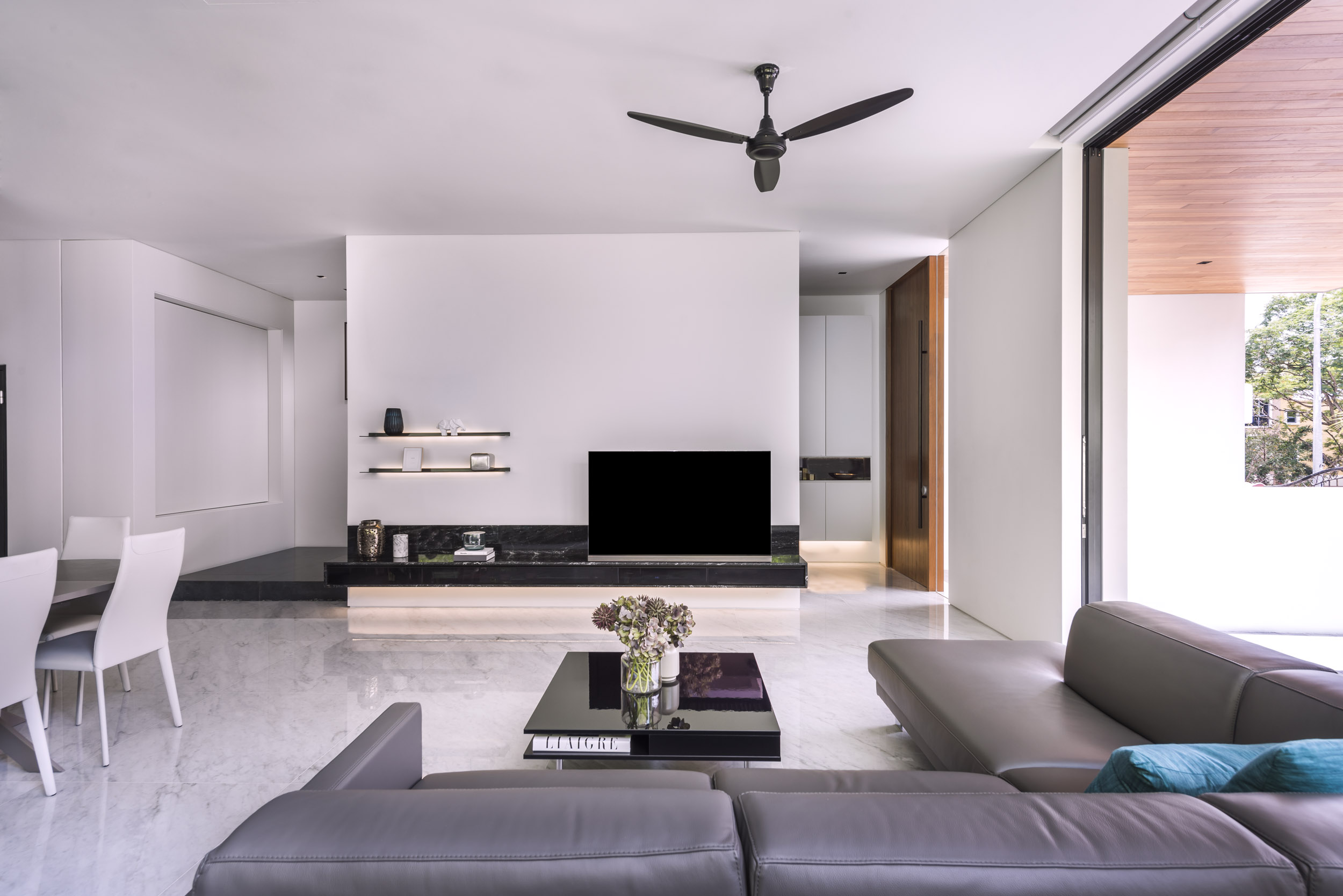
.
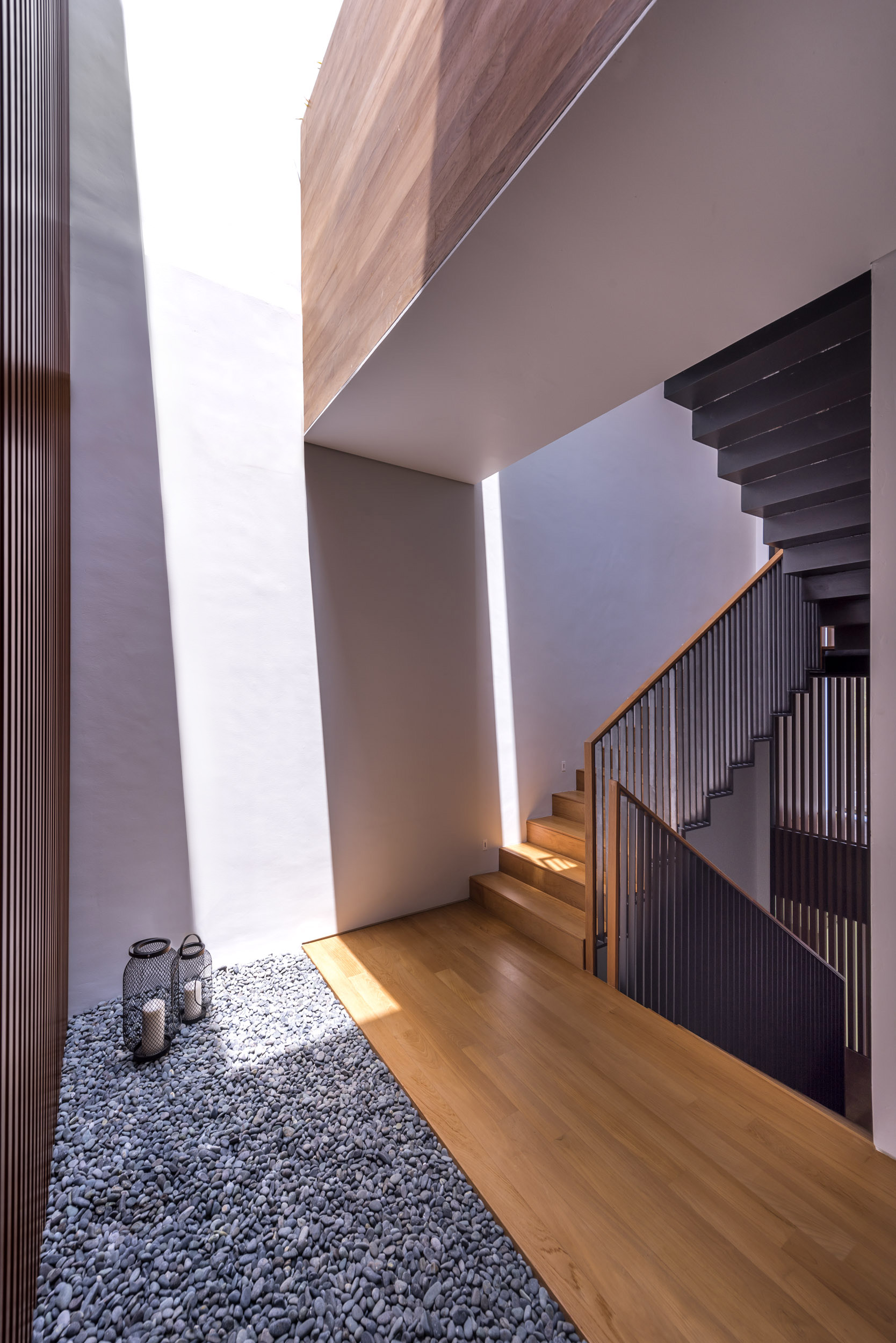
.
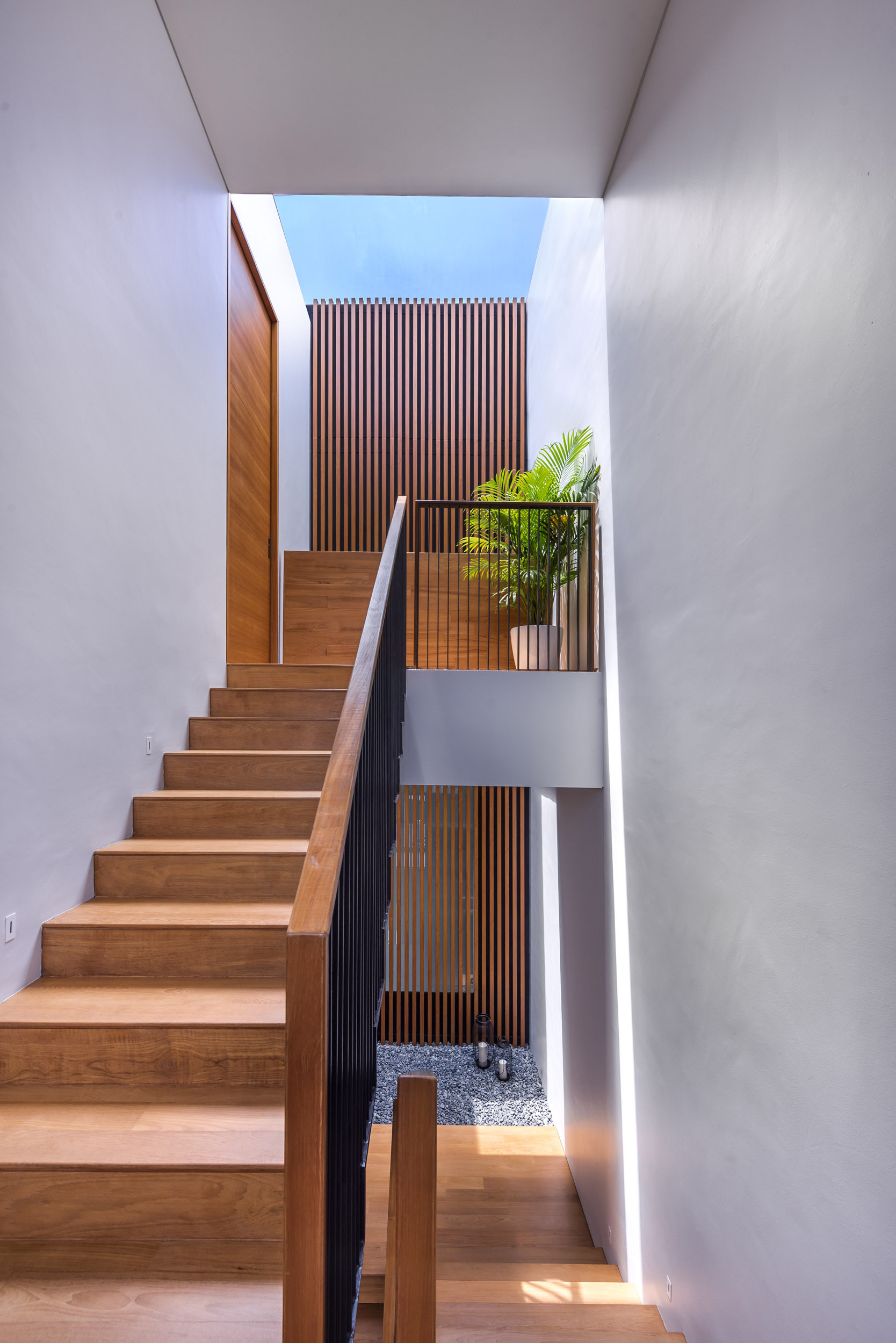
.
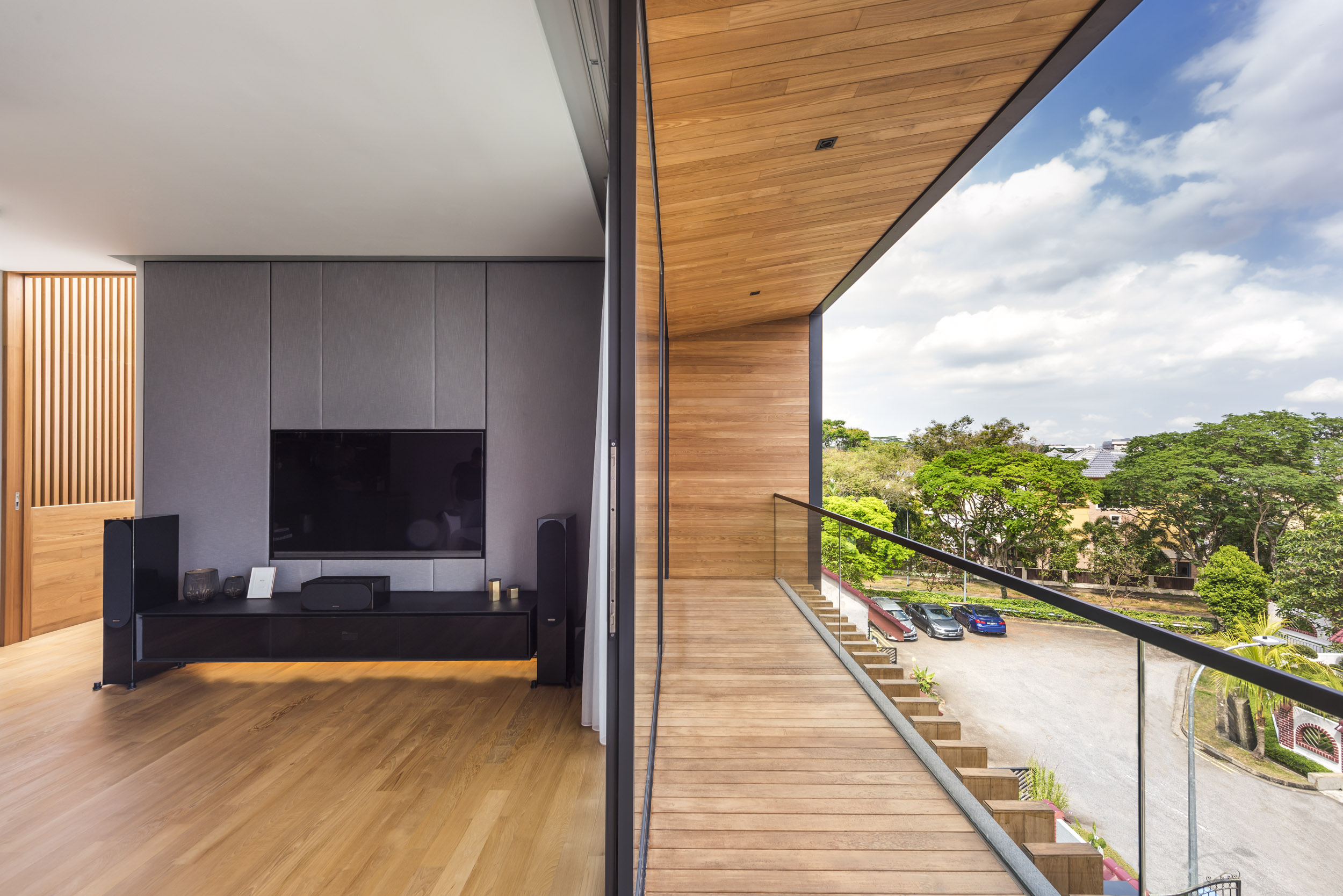
.
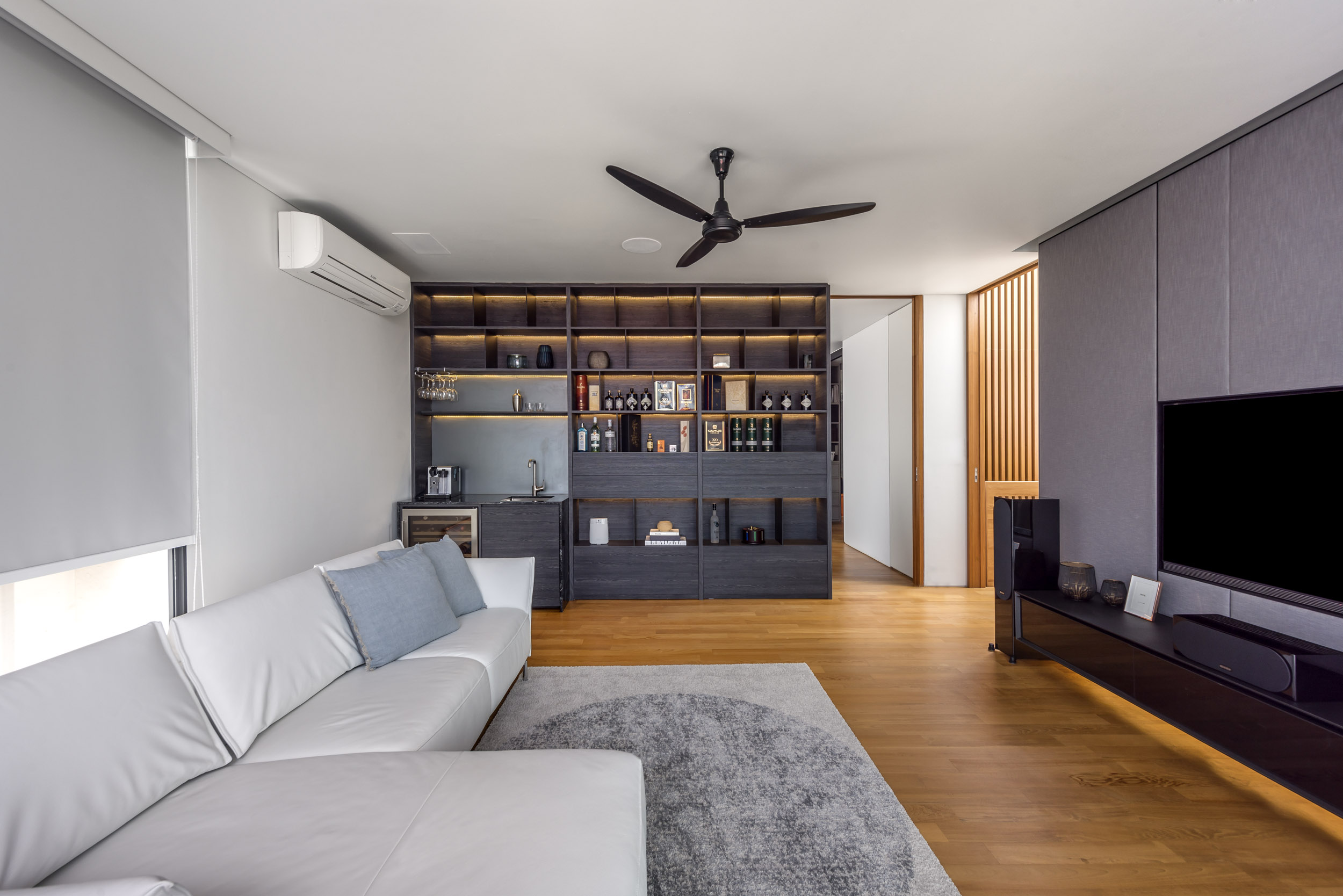
.
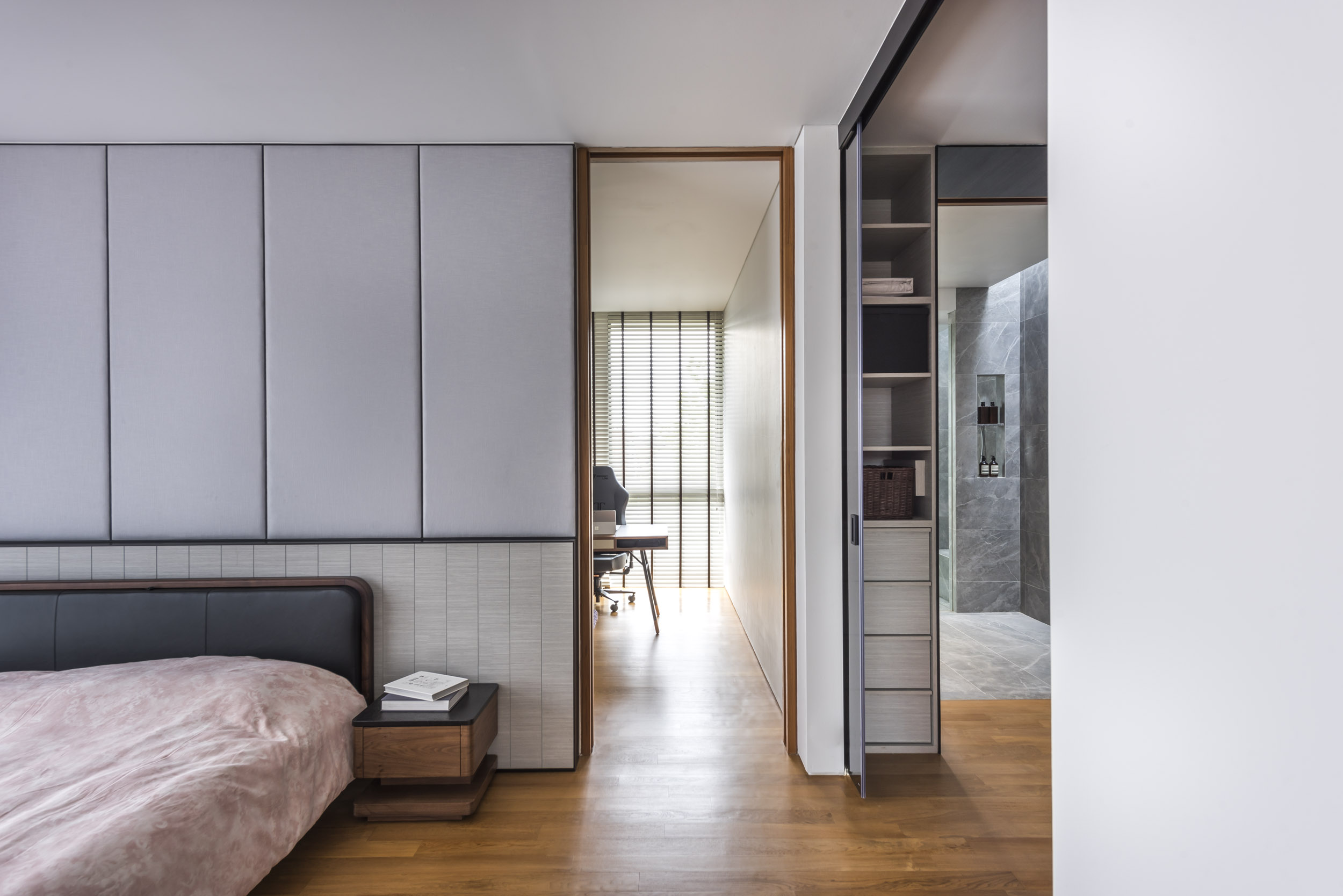
.
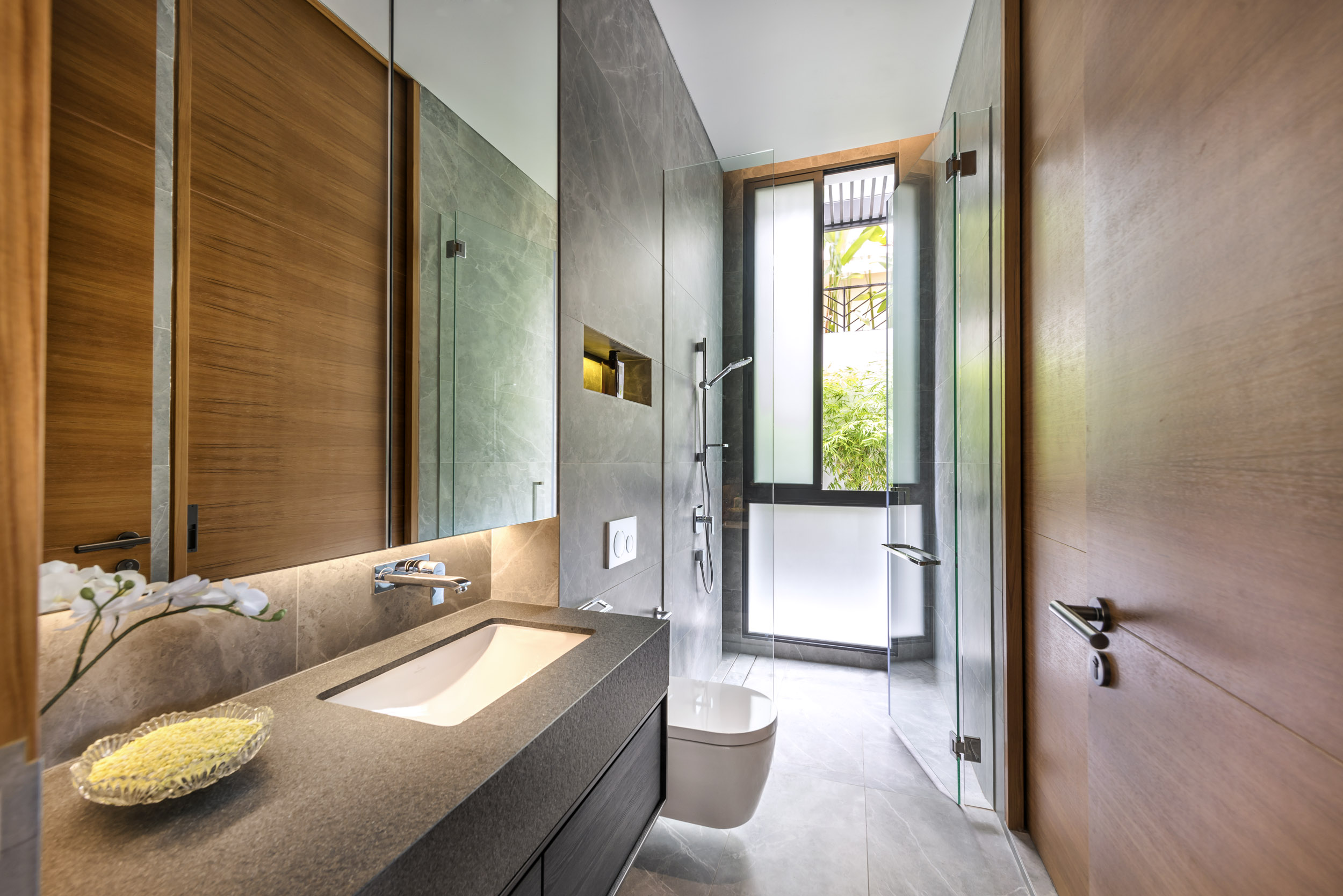
.
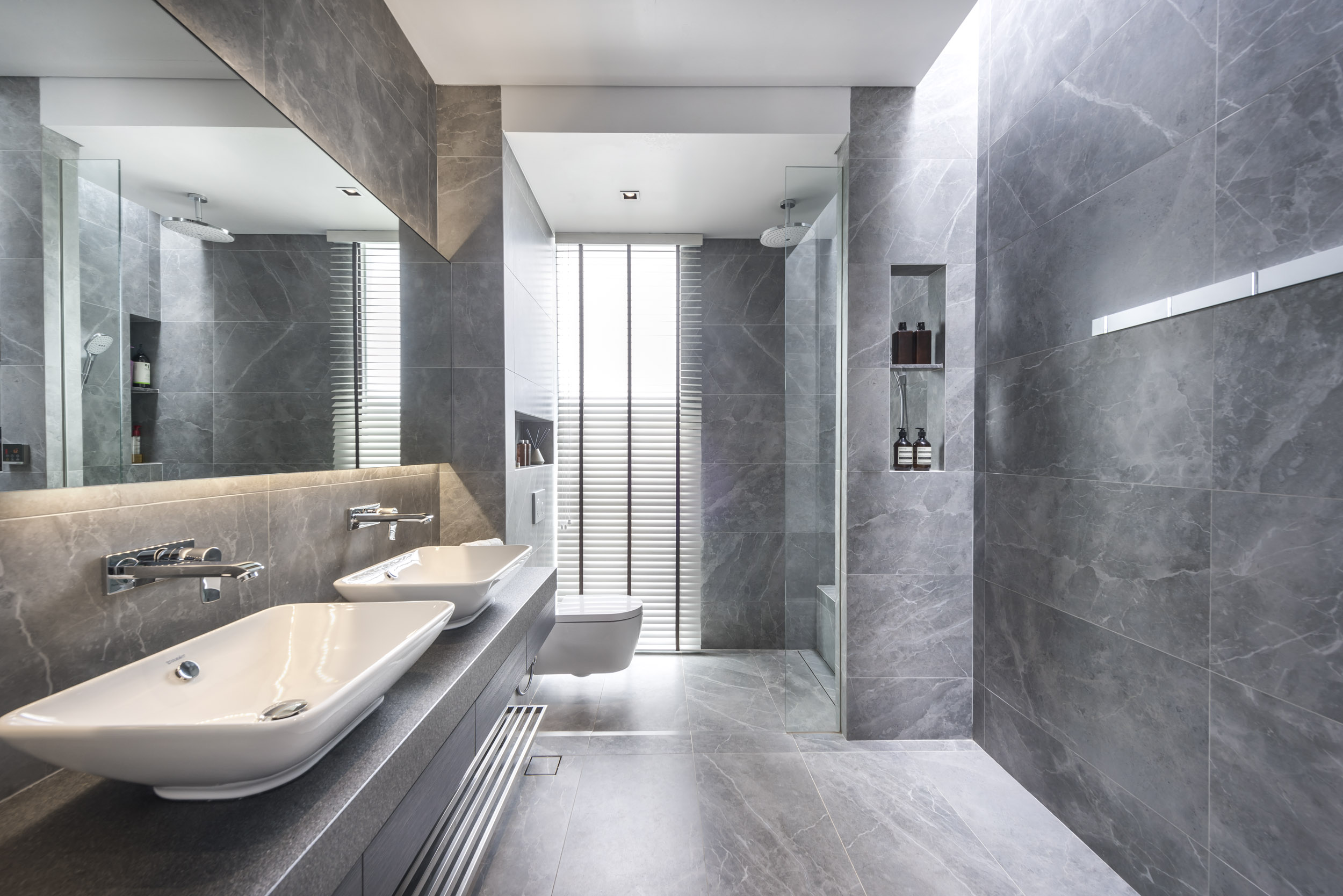
.
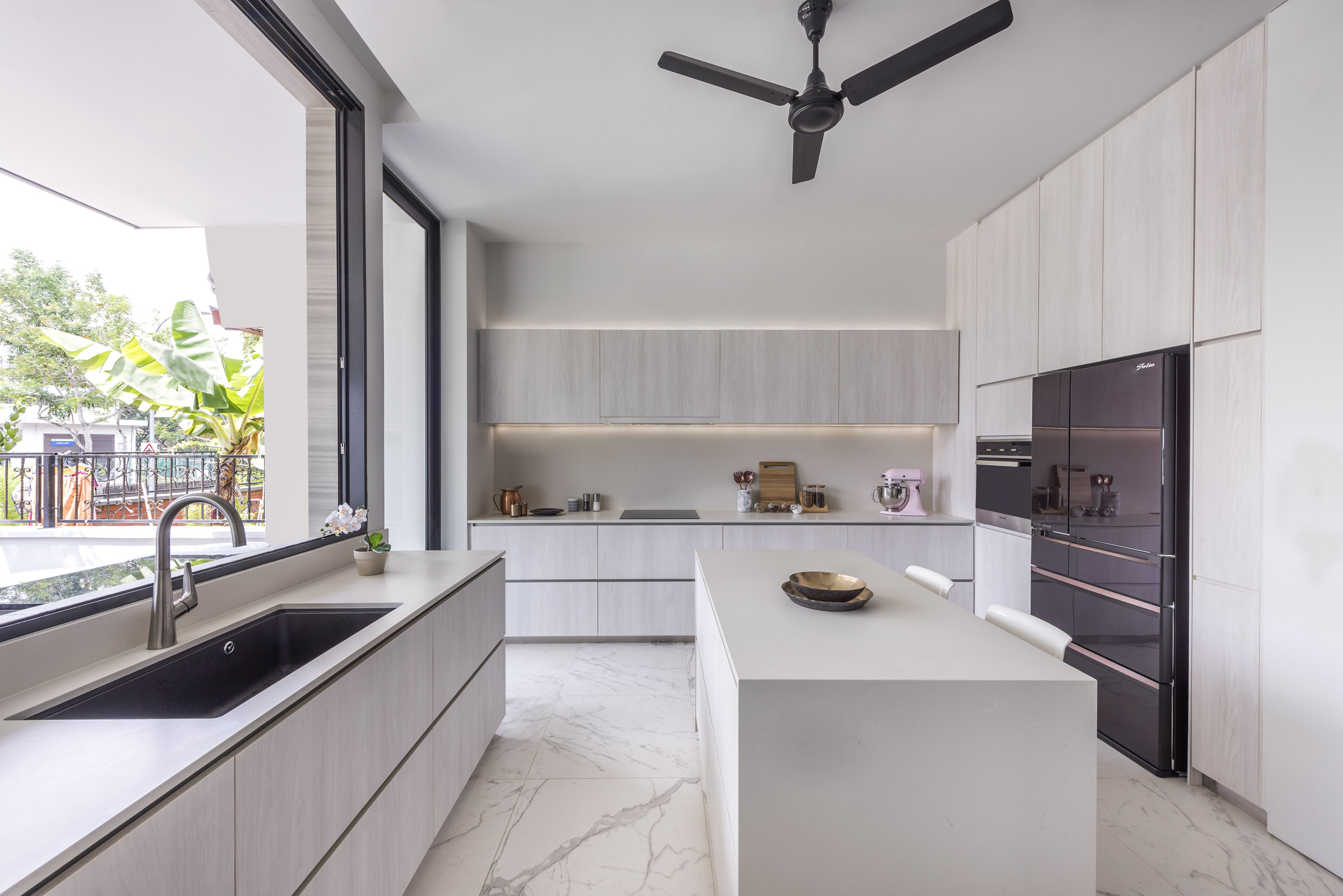
.
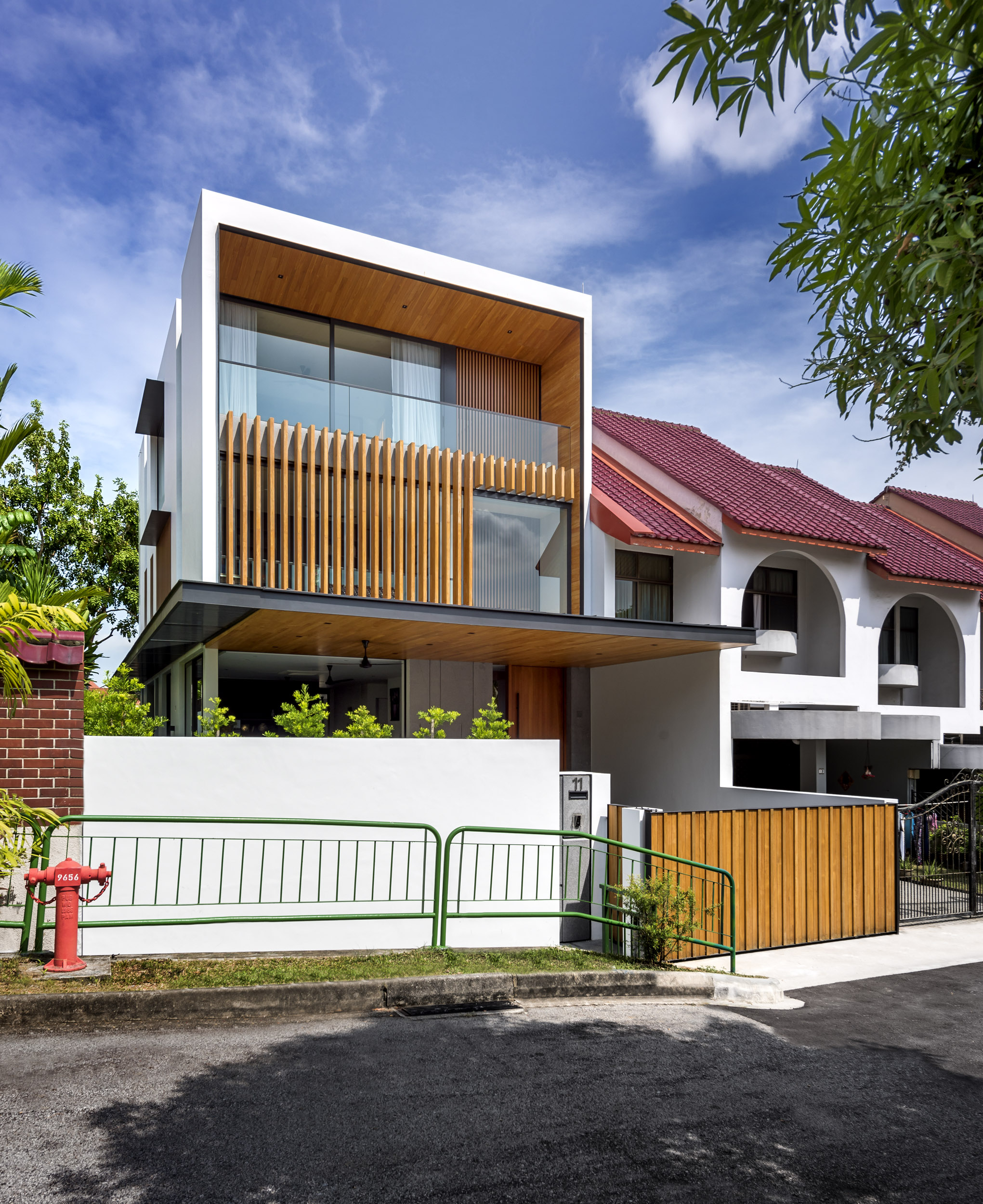
.
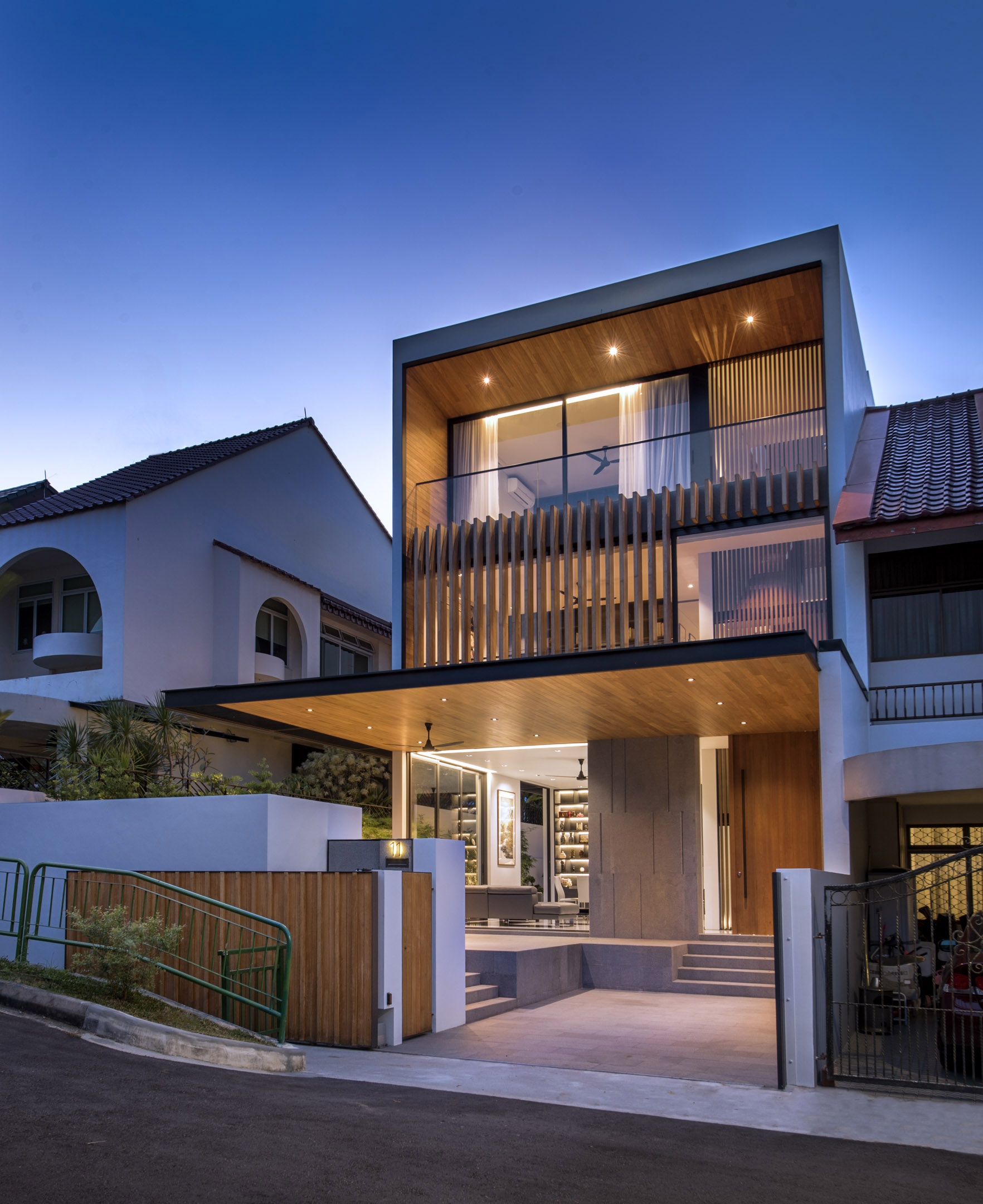
.